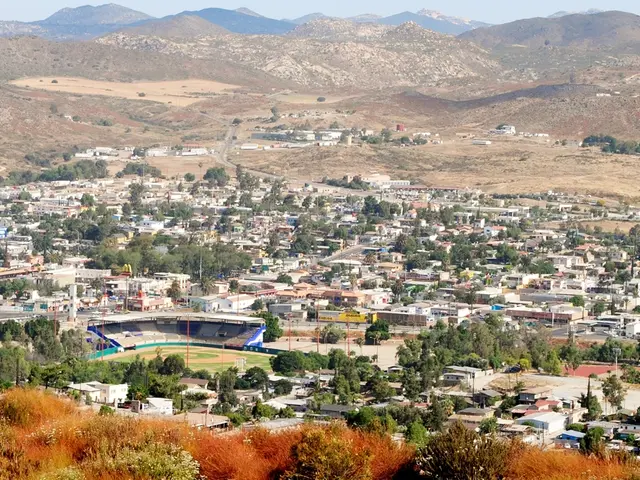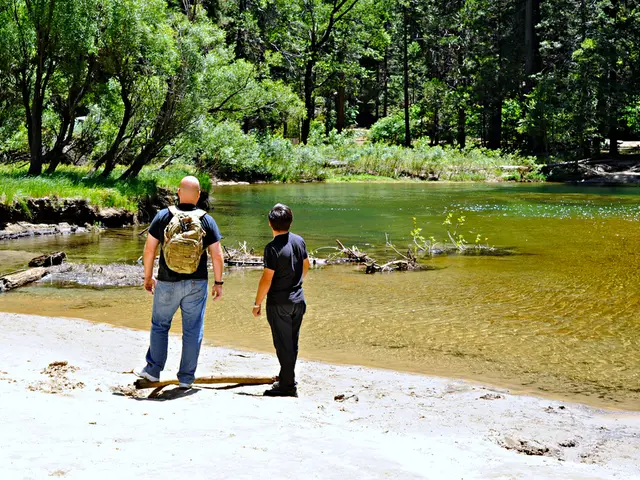Empowering Frontline Communities through Financial Solutions: Amplifying Local Opinions for Climate Adaptation Strategies
In the ongoing battle against climate change, ensuring that local communities are included and empowered in decisions regarding climate adaptation finance is becoming increasingly important. Several strategies are being proposed to achieve this goal, focusing on inclusive engagement, transparency, capacity building, and financial innovation.
One such strategy is the promotion of inclusive stakeholder and citizen participation. This approach frames engagement as a two-way process focused on building trust and dialogue, not top-down imposition. By involving local people early and throughout adaptation initiatives, measures can reflect real community needs and be maintained over time. For example, the EU-funded Adaptation AGORA project is creating a Community Hub for networking and sharing best practices, developing tailored engagement protocols for different groups, and providing specialized training to improve access to reliable climate information and combat misinformation.
Another key strategy is the building of trust through transparency and understanding. Effective adaptation requires that communities understand what is being done and why, both before and after implementation. This understanding helps overcome resistance and encourages local care and support for the measures.
Developing roadmaps and scalable investment plans is another essential component. Projects like CLIMATEFIT are uniting public and private sectors to co-create innovative financing strategies and investment avenues for resilience projects. This includes identifying revenue streams, estimating costs, and mobilizing resources necessary to support community-driven adaptation.
De-risking adaptation finance to attract more investment is also crucial, especially in developing countries. Strategies that reduce perceived financial risks facilitate the involvement of commercial private investors who can provide the needed capital to empower local communities facing climate vulnerabilities.
Recognition of adaptation finance as a critical complement to mitigation is growing, with international agreements such as COP summit agreements emphasizing the urgent need to mobilize substantial adaptation finance ($300 billion annually needed in developing countries). Ensuring funds reach local communities requires coordination between governments, the private sector, and civil society to close the adaptation finance gap and prioritize vulnerable groups.
Banks can set targets to grow adaptation finance using the Principles for Responsible Banking's guidance, a blueprint on setting targets for climate adaptation. Financial institutions are being encouraged to move beyond business-as-usual to rethink how capital is deployed, prioritize local voices, and define resilience in new ways.
The Adaptation & Resilience Investor Collaborative is working to develop tools necessary to scale up finance for adaptation, while financial institutions like development finance institutions are working with the Collaborative to scale up finance for adaptation in emerging markets and developing countries.
Insurance can play an important role in scaling finance for adaptation and resilience, as demonstrated by the collaboration between the Sustainable Insurance Facility (a collaboration between the Collaborative and the V20 group) and the V20 group of climate vulnerable countries. The Facility aims to support insurance and credit solutions for medium, small, and micro enterprises.
Financial institutions can improve the effectiveness and longevity of their financing by integrating local perspectives into project design, risk assessments, and monitoring frameworks. However, financial processes continue to follow top-down models, often sidelining local governance systems and cultural insights.
Local communities are often left out of investment decisions that directly affect their futures. By implementing the strategies outlined above, we can ensure that adaptation measures are relevant, supported, and sustainable, empowering local communities to face the challenges of climate change head-on.
- To support local communities in the face of climate change, strategies like promoting stakeholder participation and building trust through transparency are crucial.
- The EU-funded Adaptation AGORA project is a prime example, focusing on networking, best practice sharing, and community-tailored engagement protocols.
- Developing scalable investment plans, as seen in projects like CLIMATEFIT, is another essential component, uniting public and private sectors to support resilience projects and resource mobilization.
- De-risking adaptation finance is key to attract more investment, especially in developing countries, where strategies that reduce perceived financial risks can enable commercial private investors to empower local communities.
- International agreements such as the COP summit reiterate the urgent need to mobilize substantial adaptation finance, with an annual requirement of $300 billion in developing countries.
- Banks can contribute to this effort by adopting targets for climate adaptation using guidance from the Principles for Responsible Banking, focusing on local voices and redefining resilience.
- The Adaptation & Resilience Investor Collaborative and financial institutions like development finance institutions are working together to scale up finance for adaptation in emerging markets and developing countries, with insurance playing a vital role in this process.




